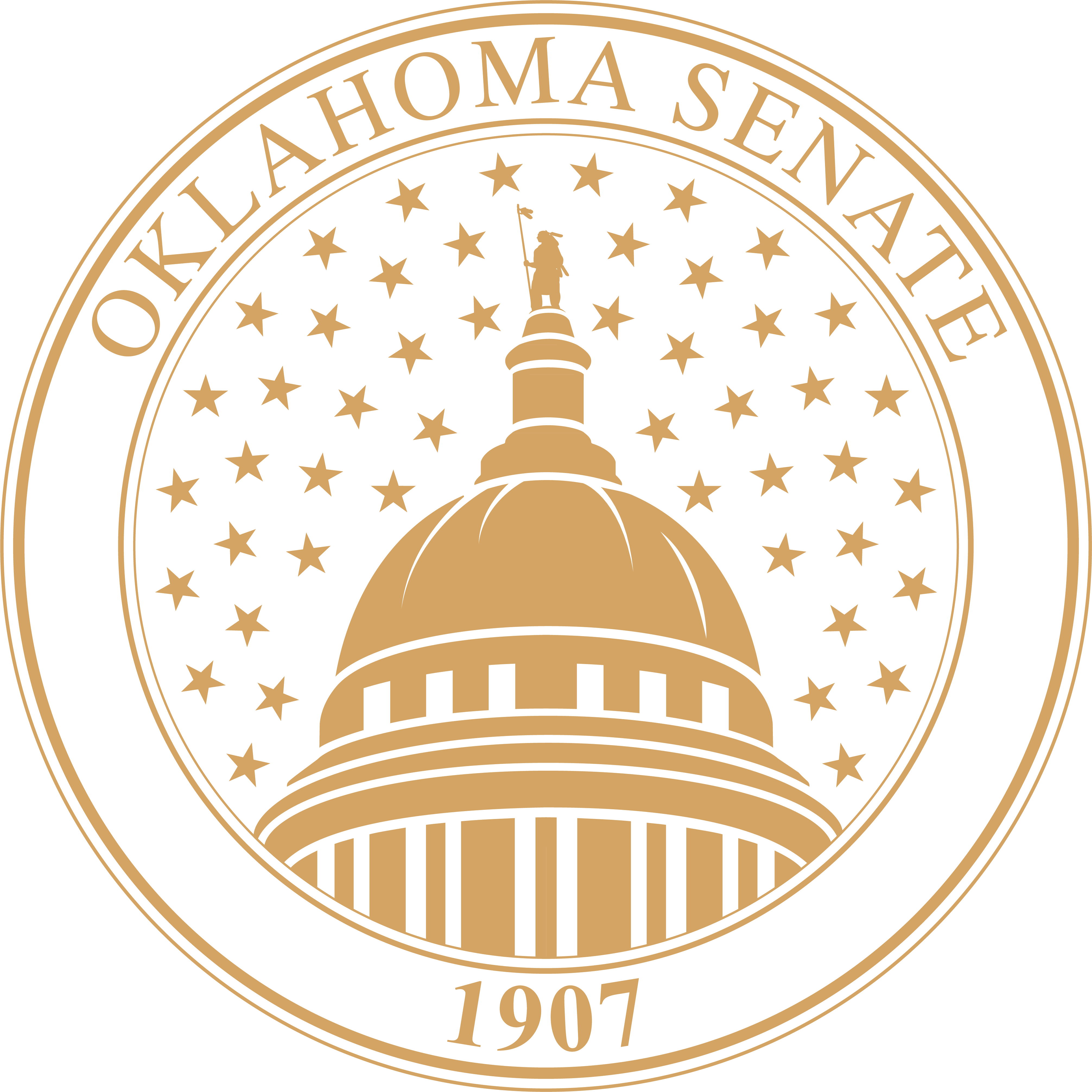The Magic of Petroleum

Artist: Wayne Cooper
Sponsor: ONEOK, Inc.
Dedication: March 01, 2006
Size: 72" x 96"
Type: Oil on Canvas
Location: 2nd Floor, Outside Governor's Office
Before the drilling and production of oil for consumer use, Native Americans were using petroleum found in Oklahoma for medicinal purposes. Petroleum was evident on the outcroppings of many water springs and streams. A report made by a Chickasaw Agent in 1853 stated:
The oil springs in this nation are attracting considerable attention, as they are said to be a remedy for all chronic diseases. Rheumatism stands no chance at all, and the worst cases of dropsy yield to its effects. The fact is, that it cures anything that has been tried. A great many Texans visit these springs, and some from Arkansas . . . There is one or two of great medical properties.
A well-known spring was at New Spring Place, north of Tahlequah in the Cherokee Nation, and another at Boyd Springs, northeast of present-day Ardmore in the Chickasaw Nation. The Indians often gathered at Boyd Springs in great numbers and lighted their camps with the gas by placing a tube or gun barrel in the ground. There was also a natural oil spring at Maytubby Springs near Caddo in Bryan County, where a hotel was opened and became popular as a resort in the area.
In 1859, Lewis Ross, a brother of Chief John Ross of the Cherokees, found a pocket of oil that produced about ten barrels a day for nearly a year. He was drilling for saltwater on the Grand River near Salina in what is now Mayes County, Oklahoma, and decided to sink a deeper well for greater production. Ross found oil instead and the news spread of this potential source of tribal revenue.
Oklahoma’s first oil company, the Chickasaw Oil Company, was organized in 1872 and encouraged individual citizens to develop natural resources.
Industry emphasis at the time centered on coal production, however, both the Cherokee and Choctaw nations passed laws in 1884 creating organizations for the “purpose of finding petroleum or rock oil . . .”
Five years later in 1889, a wildcatter named Edward Byrd secured mineral leases from the Cherokee Nation. He drilled his first well near present-day Chelsea in Rogers County in 1890, and found oil at a depth of only 36 feet. His well produced about a half a barrel a day but his efforts were hampered severely by government regulation, inadequate transportation facilities and the lack of a readily accessible market. His Chelsea well is still celebrated as Oklahoma's first oil well.
Images are copyright of The Oklahoma State Senate Historical Preservation Fund, Inc. and the artist. Please contact Matt Duehning at 405-524-0126 or Matt.Duehning@oksenate.gov for further copyright information.
 Oklahoma Senate
Oklahoma Senate

